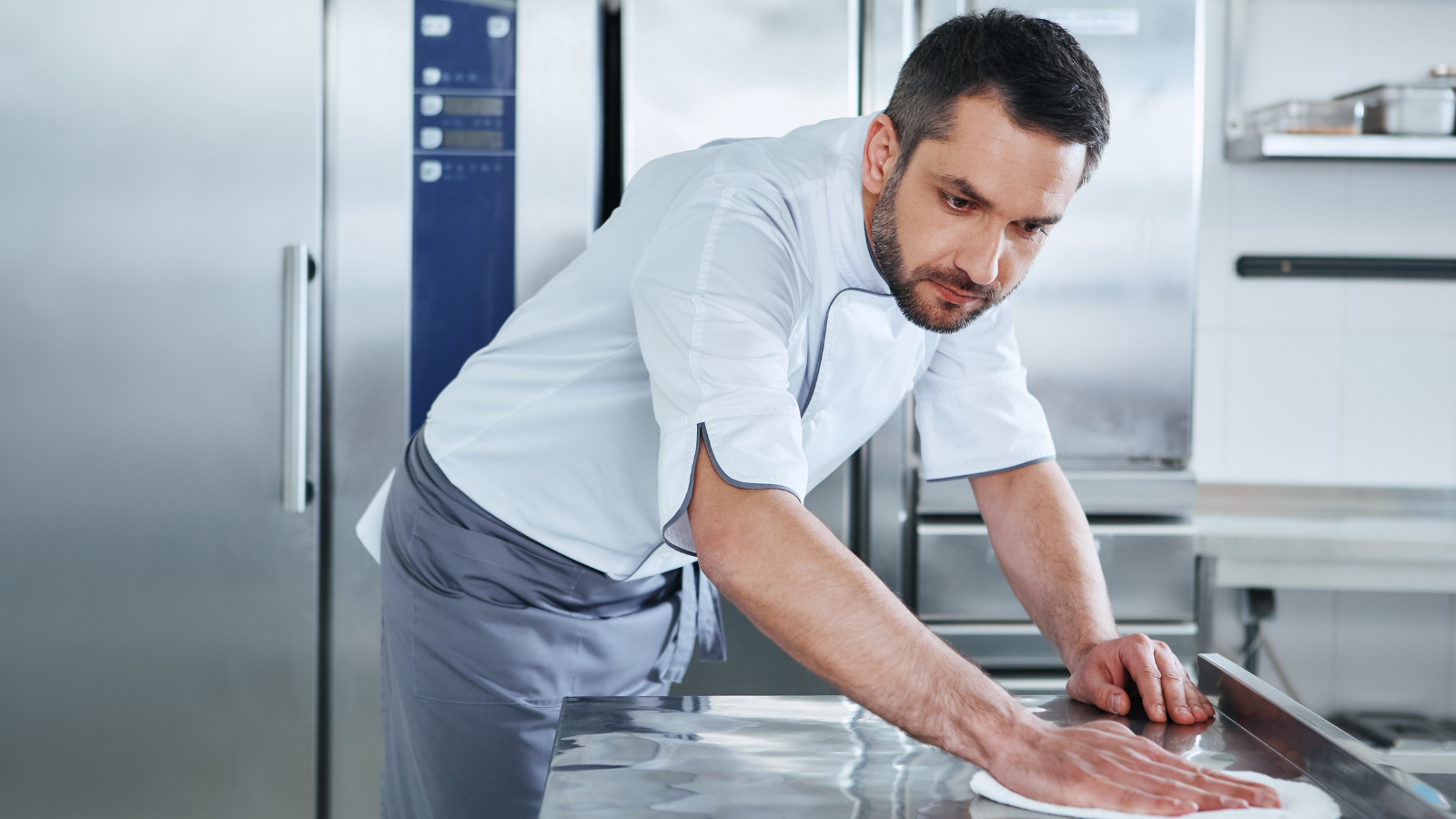Last Updated DECEMBER 2024
Empower your food service business with impeccable hygiene and unrivalled reputation
In the fast-paced world of food service, cleanliness isn't just a nicety—it's a non-negotiable cornerstone of success.

Did you know that a staggering 85%* of surveyed people won't even consider dining at restaurants with poor cleanliness ratings? This statistic alone underscores the profound impact cleanliness has on your establishment's reputation and bottom line
The Power of Cleanliness: Beyond Hygiene
Cleanliness goes far beyond mere hygiene—it's a powerful driver of customer satisfaction, food safety, and business reputation. By prioritizing cleanliness, you not only meet industry standards but exceed them, setting your business apart in a competitive landscape.
Overcoming Cleanliness Hurdles:
In the pursuit of cleanliness excellence, food service operators encounter various challenges. From effectively removing germs, dirt, and impurities to ensuring surfaces are pristine before sanitization, each step demands meticulous attention to detail.
Cleaning: Removes germs (not kill), dirt, and impurities from surfaces or objects
Remove soil:
• Wiping increases overall soil removal1- friction & absorbency
• Surfaces must be clean before sanitising2
• Detergent residues will neutralize many sanitisers2
Remove accumulated moisture:
• Water left on surfaces creates the potential for bacteria growth
• Wet surfaces could reduce efficacy of sanitiser
• Dry wipes absorb good amount of water
Keep soil from re-depositing:
• Wiping generates the least dispersion of droplets1
• Reduce the risk of allergen3 reduce cross contact
Sanitising: Lowers the number of germs/ microorganisms on surfaces or objects to a safe level
• It is not the same as disinfecting
• It removes pathogens to a safe level after cleaning and food products may be placed on the surface immediately after the dwell time
• Experts recommend wiping surface after sanitation so that you remove residual chemicals along with ‘small corpses’.4
The Cleanliness Checklist
Maintaining cleanliness extends beyond visible surfaces to encompass often-overlooked areas such as restrooms, entryways, and dining spaces.
Exterior: Make a stellar first impression with a clean and inviting exterior, from spotless windows to well-maintained landscaping.
Entryway: Ensure a welcoming entryway free of dirt and clutter, setting the stage for a positive dining experience.
Dining room: Pay attention to every detail, from clean floors and tables to sparkling windows and well-lit surroundings.
Restrooms: Maintain immaculate restrooms with proper lighting, clean facilities, and fully stocked supplies.
Empowering your success through cleaning confidence
At Kimberly-Clark Professional, we are your trusted partner for cleanliness solutions. Our comprehensive range of trusted, high-quality products is specifically designed to address the unique challenges faced by food service establishments.
Cleanliness isn't just about hygiene – it's about driving business success. By partnering with Kimberly-Clark Professional, you gain access to innovative solutions that not only meet but exceed cleanliness standards in the food service industry. Elevate your cleanliness standards today and witness the full potential of your food service operations.

The key to a cleaner, more efficient food service facility
Enhance your food service operations with practical strategies to tackle common challenges like kitchen hygiene, high-traffic areas, and cross-contamination


















